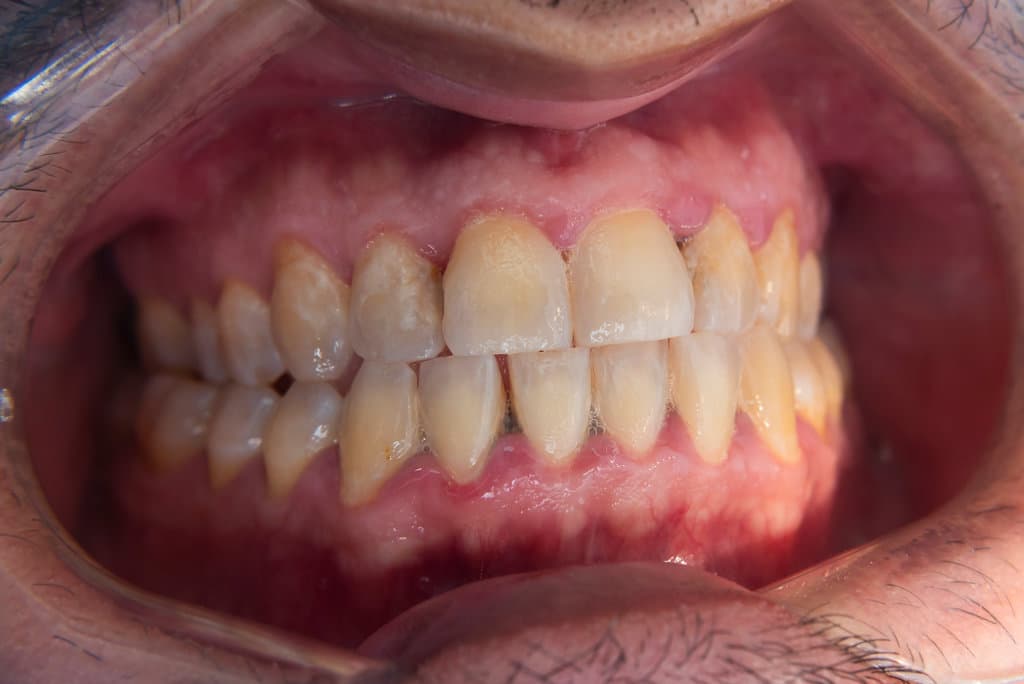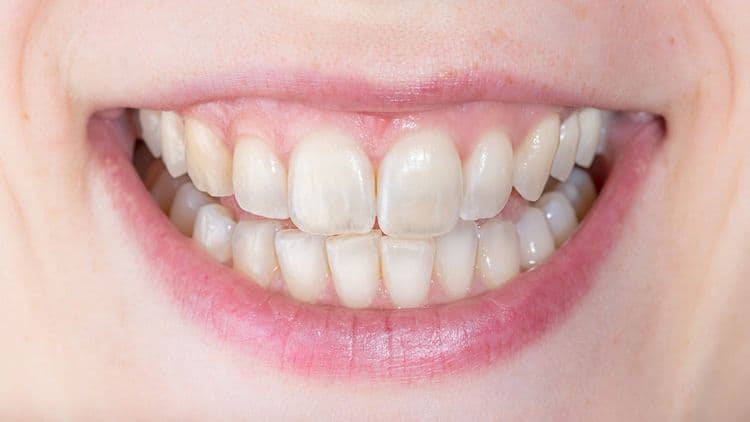Enamel erosion, a gradual process compromising tooth integrity, progresses through distinct stages that require targeted interventions. Initially, surface softening occurs due to acid exposure, necessitating dietary changes and remineralization techniques. As erosion advances, visible surface loss ensues, prompting the need for fluoride treatments. Ultimately, dentin exposure leads to heightened sensitivity and decay risk, demanding protective measures like sealants. Understanding these stages is vital for effective prevention and treatment strategies.
Understanding Enamel Erosion
Enamel erosion, a condition characterized by the gradual degradation of the tooth’s outermost layer, is primarily caused by acid exposure, which progressively demineralizes the enamel surface. The enamel structure, a robust yet thin outer shell, serves to protect underlying dentin and pulp from thermal, chemical, and mechanical insults. Its primary function includes maintaining tooth integrity and enabling effective mastication. As demineralization advances, the enamel loses its mineral content, compromising its protective capabilities and leading to increased sensitivity and vulnerability to decay. Clinical interventions focus on remineralization techniques, utilizing fluoride treatments and specialized oral care products to augment enamel resilience. Preventive strategies emphasize dietary modifications, regular dental assessments, and the use of protective agents to preserve enamel function and structural integrity.
Causes of Enamel Erosion
While enamel erosion can result from several factors, the predominant cause is acid exposure from dietary sources and gastric reflux. Dietary factors such as frequent consumption of acidic beverages, including sodas and fruit juices, contribute greatly to the demineralization of enamel. Additionally, gastroesophageal reflux disease (GERD) introduces gastric acids to the oral cavity, exacerbating enamel loss. Suboptimal oral hygiene practices fail to neutralize these acids, allowing prolonged exposure that harms the enamel. Genetic predisposition also plays a role, as some individuals may naturally have less robust enamel or altered saliva composition, which provides limited buffering against acids. Preventative measures include reducing acidic intake, improving oral hygiene, and managing systemic conditions like GERD to mitigate enamel erosion risk.
Early Signs of Enamel Wear
How can one identify the initial manifestations of enamel wear? Early detection of enamel wear is essential for preventing further dental complications. Clinically, the initial signs include slight discoloration, increased sensitivity, and a smooth, shiny surface on the teeth. These indicators result from the gradual loss of the enamel surface due to acidic exposure. Dietary impacts play a significant role; frequent consumption of acidic foods and beverages accelerates enamel demineralization. The early stages often go unnoticed, necessitating regular dental examinations for accurate diagnosis. Treatment strategies focus on modifying dietary habits to reduce acidic intake and using fluoride treatments to enhance remineralization. Employing these measures early on can mitigate progression and preserve dental integrity, emphasizing the importance of vigilance in oral health maintenance.
Stage 1: Surface Softening
Having identified the early signs of enamel wear, the next phase involves understanding the process of surface softening. This initial stage is characterized by the demineralization of the enamel’s outermost layer, resulting primarily from acidic exposure. The acids can stem from dietary influences, particularly the frequent consumption of citrus fruits, carbonated beverages, and other acidic foods. These acids contribute to the dissolution of calcium and phosphate ions, essential components in tooth mineralization. Clinically, surface softening presents a critical opportunity for intervention. Treatment strategies focus on remineralization, utilizing fluoride treatments to enhance enamel resistance. Additionally, modifying dietary habits to reduce acid intake is pivotal. Educating patients on the importance of maintaining a neutral oral environment aids in preventing further progression of enamel erosion.
Stage 2: Surface Loss
In Stage 2: Surface Loss, enamel erosion progresses beyond mere softening to visible material loss on the tooth’s surface. This stage is characterized by diminished enamel thickness, leading to alterations in surface texture. The once smooth enamel becomes rough and uneven as mineral content is depleted. Surface irregularities can increase plaque retention, escalating the risk of caries. Clinically, the tooth may exhibit signs of dullness and opacity due to the reduced thickness of the protective layer. Preventive intervention is essential to arrest further degradation. Topical fluoride treatments can enhance remineralization of the remaining enamel. Additionally, the use of remineralizing agents, such as casein phosphopeptide-amorphous calcium phosphate (CPP-ACP), can help restore surface texture and fortify the compromised enamel structure.
Stage 3: Dentin Exposure
Stage 3 of enamel erosion, known as Dentin Exposure, marks a critical point in dental health deterioration. At this stage, the protective enamel layer is greatly compromised, exposing the underlying dentin. This exposure results in increased dentin sensitivity due to the direct stimulation of nerve endings within the tooth structure. The dentin, unlike enamel, is porous and less mineralized, making it susceptible to rapid decay and further erosion if unaddressed. Clinically, the focus of treatment shifts towards minimizing sensitivity and preventing further damage. Desensitizing agents, such as fluoride varnishes and specialized toothpaste, are employed to mitigate dentin sensitivity. Additionally, dental sealants or restorative materials may be used to reinforce the tooth structure and provide a protective barrier against external stimuli.

Symptoms Associated With Advanced Erosion
In advanced stages of enamel erosion, patients often exhibit heightened sensitivity to temperature changes due to the exposure of underlying dentin. Clinically, this stage is also characterized by visible tooth discoloration as the eroded enamel reveals the yellowish dentin layer beneath. Additionally, the structural integrity of teeth is compromised, increasing the risk of cracks, which necessitates timely intervention to prevent further dental complications.
Sensitivity to Temperature Changes
Many individuals experiencing advanced enamel erosion report heightened sensitivity to temperature changes, a common symptom indicating significant dental tissue compromise. This temperature sensitivity arises from the thinning or complete loss of the protective enamel layer, exposing the underlying dentin and nerve endings. Enamel health is compromised due to factors such as acidic dietary intake or mechanical abrasion, leading to increased vulnerability of teeth to hot and cold stimuli. Clinically, this manifests as sharp, transient pain when consuming temperature-extreme foods or beverages. Management involves addressing the underlying cause of erosion and implementing strategies to mitigate sensitivity, such as using desensitizing toothpaste containing compounds like potassium nitrate or stannous fluoride. Additionally, dietary modifications and professional fluoride treatments may enhance enamel resilience and reduce discomfort.
Visible Tooth Discoloration
Visible tooth discoloration often accompanies the advanced stages of enamel erosion, marking a significant shift in oral health status. This discoloration results from the thinning of enamel, revealing the underlying dentin, which is naturally yellowish. As enamel continues to erode, the protective barrier diminishes, allowing for more pronounced color changes. The aesthetic implications can be distressing, prompting individuals to seek interventions such as tooth whitening. However, tooth whitening treatments may further compromise already weakened enamel if not carefully managed. Preventative strategies primarily focus on dietary changes, reducing the intake of acidic foods and beverages to mitigate further erosion. Additionally, increasing the consumption of calcium-rich foods can reinforce enamel integrity. Regular dental evaluations are essential for monitoring enamel health and implementing timely interventions.
Increased Risk of Cracks
As enamel erosion progresses to advanced stages, the structural integrity of the teeth becomes increasingly compromised, heightening the risk of cracks and fractures. This deterioration results from the gradual weakening of enamel, the tooth’s outermost protective layer, essential for maintaining enamel integrity. Without sufficient enamel, the underlying dentin is exposed, rendering teeth more susceptible to mechanical forces and stresses. Clinically, this manifests as fine lines or overt fractures, often exacerbated by bruxism or sudden temperature changes. Crack prevention strategies are critical at this juncture, focusing on reinforcing enamel through remineralization treatments, such as fluoride application or calcium phosphate therapies. Additionally, the use of dental sealants can offer a protective barrier, contributing to enhanced enamel integrity and reducing fracture incidence.
Preventative Measures for Enamel Protection
Although enamel erosion is a significant concern for dental health, implementing preventative measures can effectively protect enamel from further damage. Modifying dietary habits is paramount; limiting the consumption of acidic foods and beverages reduces the chemical wear on enamel surfaces. Additionally, increasing the intake of calcium-rich foods can aid in remineralization, fortifying the enamel’s structural integrity. Oral hygiene plays an essential role in enamel preservation as well. Brushing with fluoride toothpaste enhances enamel resistance by promoting remineralization. It is advisable to use a soft-bristled toothbrush to prevent mechanical abrasion. Further, maintaining a routine of regular dental check-ups allows for professional monitoring and early detection of erosion signs. These preventative strategies collectively contribute to sustained enamel health, mitigating the progression of erosion.
Treatment Options for Enamel Erosion
Fluoride treatments play a critical role in the remineralization of enamel surfaces, enhancing the resistance of teeth to acid attacks. These treatments are often integrated into preventive dental care strategies, aiming to halt the progression of enamel erosion and reduce the risk of further damage. Regular professional evaluations and personalized care plans are essential components in managing and mitigating the effects of enamel erosion.
Fluoride Treatments Benefits
The efficacy of fluoride treatments in the management of enamel erosion lies in their ability to enhance remineralization and inhibit demineralization of dental enamel. By facilitating fluoride application, these treatments work at the molecular level to promote enamel remineralization. Fluoride ions integrate into the hydroxyapatite structure of enamel, forming a more robust and acid-resistant fluorapatite. This transformation strengthens the enamel matrix, reducing susceptibility to erosive challenges from acidic environments. Simultaneously, fluoride’s capacity to inhibit bacterial metabolism decreases acid production, further protecting enamel. Clinical studies underscore the importance of topical fluoride treatments—such as varnishes, gels, and rinses—in mitigating the progression of enamel erosion. Overall, fluoride treatments serve as a critical therapeutic modality in preserving enamel integrity against erosive processes.
Preventive Dental Care
Building upon the benefits of fluoride treatments, preventive dental care encompasses a range of strategies aimed at arresting and managing enamel erosion. Central to these strategies is the maintenance of ideal oral hygiene, which involves regular brushing with fluoride toothpaste and flossing to remove plaque, thereby reducing the risk of acid attacks on enamel. In addition, dietary choices play a critical role; individuals are advised to limit the intake of acidic and sugary foods, which can exacerbate enamel demineralization. Incorporating calcium-rich foods and beverages can aid in remineralization processes. Additionally, professional dental evaluations and cleanings provide early detection and intervention for enamel erosion. The implementation of these preventive measures serves as a cornerstone in preserving enamel integrity and mitigating further deterioration.
Frequently Asked Questions
How Does Diet Impact the Progression of Enamel Erosion?
Dietary acids and sugar intake considerably influence enamel erosion progression. Frequent consumption of acidic foods and beverages, coupled with high sugar intake, accelerates demineralization. Clinical focus should aim at dietary modifications and remineralization treatments to mitigate erosion.
Can Enamel Erosion Affect the Color of Teeth?
Enamel erosion may lead to enamel discoloration, resulting in a yellowish appearance as underlying dentin becomes exposed. Tooth whitening treatments could address superficial discoloration, but they cannot reverse structural damage or restore lost enamel.
Are There Any Genetic Factors Contributing to Enamel Erosion?
Genetic predisposition can influence enamel strength, impacting susceptibility to erosion. Variations in genes related to enamel formation may lead to reduced mineralization, increasing vulnerability. Identifying genetic factors aids in developing personalized prevention and treatment strategies for enamel erosion.
How Can You Tell if Toothpaste Is Effective Against Enamel Erosion?
To determine toothpaste effectiveness against enamel erosion, one should examine toothpaste ingredients like fluoride and calcium phosphates, known for enamel strengthening properties. Clinical studies and scientific reviews can further inform treatment focus on ideal tooth protection.
Is Enamel Erosion Reversible With Lifestyle Changes Alone?
Enamel erosion is not fully reversible through lifestyle modifications alone. However, integrating proper dental care, such as using fluoride toothpaste and avoiding acidic foods, can help mitigate further damage and maintain existing enamel integrity. Professional evaluation is recommended.


